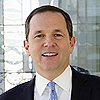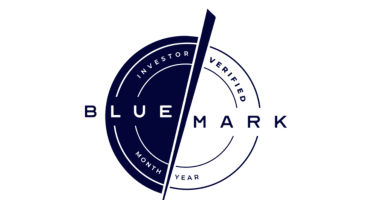In a nutshell, this conviction from the Wellington Global Stewards Fund’s team is what underpins their distinctive approach. The Fund’s fifth anniversary offers a good opportunity to take stock and ask Portfolio Managers Mark Mandel, Yolanda Courtines and Sam Cox to share the essence of their approach and why they believe excellence in stewardship is more pivotal than ever.
How do you define stewardship?
Y.C. Stewardship is about building the future value of a company through strong leadership and the responsible and strategic management of natural, human and financial resources. For us, good corporate stewardship means balancing the needs of all stakeholders in the pursuit of long-term returns. This entails investing in people, protecting the planet and increasing the resilience of future profits through innovation.
Any reflections on performance over the last five years?
Y.C. Our goal is to align with the needs of our beneficiaries, delivering stable compounding of investment returns over the long term. The Fund has been able to navigate a wide range of market regimes, with growth- and value-led markets and risk-on and risk-off environments. We think this underscores the importance of prioritising stock selection as the key driver of risk and return in the portfolio. Our core footprint is the result of our focus on diversification, risk management and our emphasis on stock selection to help deliver in line with this goal.
What sets this Fund apart?
M.M. The Fund aims to be a core global equity allocation for portfolios across cycles by seeking to identify those high-quality companies with a history of high returns on capital, with the stewardship to sustain those returns into the future. As fiduciaries, we are committed to identifying long-term holdings that meet the above requirements and ensuring a high level of engagement to hold the underlying companies to a superior standard.
What is the link between stewardship and returns?
S.C. We believe a company with a strong management team and an empowered board is better placed to deliver sustained value and mitigate risk. By being a good steward of its capital and respecting the interests of all its stakeholders, a company can create a flywheel effect strengthening its competitive position and profit margins, along with its resilience and ability to attract and retain customers, incentivise staff and strengthen its supply chain.
What is the role of engagement?
Y.C. Engagement is an important consideration for every active manager, but it is critical to our approach given our desire to hold names for at least a decade and to place a high value on more qualitative investment drivers. Stewardship focuses on inputs to future returns before they appear in the income statement or balance sheet. Engagement helps us get comfortable that the leading stewardship is present and that companies continue to meet our high expectations around resource allocation and long-termism. Engagement builds trust and leads to respectful two-way dialogue with boards and management teams that empowers us to drive positive long-term change.
What makes a good candidate for inclusion?
M.M. We want to see evidence of strength and persistence of returns coupled with rigorous capital discipline and a leading market position with innovative products or services. We look for companies with strong management teams and a robust governance culture, with checks and balances and an open culture where views can be challenged. Boards need to be independent and diverse. Overall, we want to see tangible evidence that management and boards consider the interests of all stakeholders.
Why would you avoid a potentially good candidate?
Y.C. Over the years, we have faced several instances of companies that appeared to be good candidates on paper but ultimately failed to meet our high bar for stewardship and our long-term horizon. Shortcomings include, for instance, unbalanced governance arrangements, or a prioritisation of short-term financial profitability at the expense of the environment, staff or suppliers. This emphasis can increase potential regulatory or reputational risk.
How do you deal with market concentration?
S.C. Market concentration has been a headwind over the past year, but also presents an opportunity to invest in leaders at more attractive relative valuations. Ultimately, we think some of the technology companies currently leading the market face a wide range of return and stewardship challenges that may hamper the sustained long-term value creation we seek.
What about overall diversification?
Y.C. We remain firmly committed to running a well-diversified portfolio that emphasizes appropriate exposure to stock-specific risk. The narrowness in the markets has been a short-term challenge but remains a largely US phenomenon. We invest across regions and sectors and have access to a wide universe of large, leading companies. We also run a European-focused approach, reflecting the presence of numerous globally orientated quality companies in Europe.
What is a developing area of focus?
Y.C. We are increasingly interested in the impact of biodiversity loss as this may have substantial ramifications for a growing number of sectors, notably food and agriculture but also pharmaceuticals, and we expect good stewards to start preparing for the associated risks and opportunities.
Which key lessons did you learn?
M.M. There is no such thing as a perfect company. We invest in a dynamic world, and we expect that a company will always have to adapt to changing external and internal circumstances. As much as we apply an exceedingly high bar to include any stock in our portfolio, there are opportunities for every holding to improve as a steward of capital, resources and people.
Y.C. Engagement is never done. Having continued in-depth conversations with boards and management is so important to genuinely understand the long-term strategic direction of a company and ensure alignment with our expectations.
S.C. I only recently became portfolio manager for the Fund, but I would say the importance of stewardship as a lens through which we can seek to understand all aspects of a company and ask the right questions about the future strength of returns.
What keeps you up at night?
M.M. First and foremost, our team is concerned about being good fiduciaries for the money our clients have entrusted with us, and for delivering on our performance objectives. These are outcomes we can influence by consistently sticking with our investment philosophy and by executing on a strong research and portfolio management process, dedicated to continuous refinement and improvement. Secondarily, I worry that markets will dismiss stewardship considerations in favour of short-termism and an embrace of growth-at-all-costs. Over time, we believe our balanced approach will prove out as portfolio holdings deliver financial outcomes that reflect the benefits of high returns on capital and strong corporate stewardship.
What are you excited about?
Y.C. If I look five years ahead, there is plenty to be excited about within the portfolio as I am convinced that the companies in which we invest on our clients’ behalf will play a key role in helping to solve some of the formidable challenges the world faces, whether by contributing to more sustainable agriculture, playing a key role in reducing the use of plastics in consumer goods or supporting the energy transition.
















